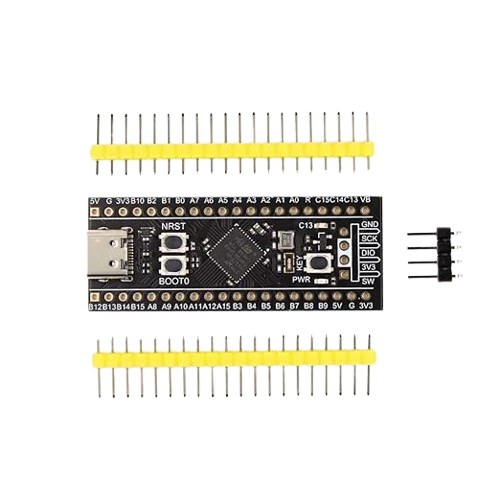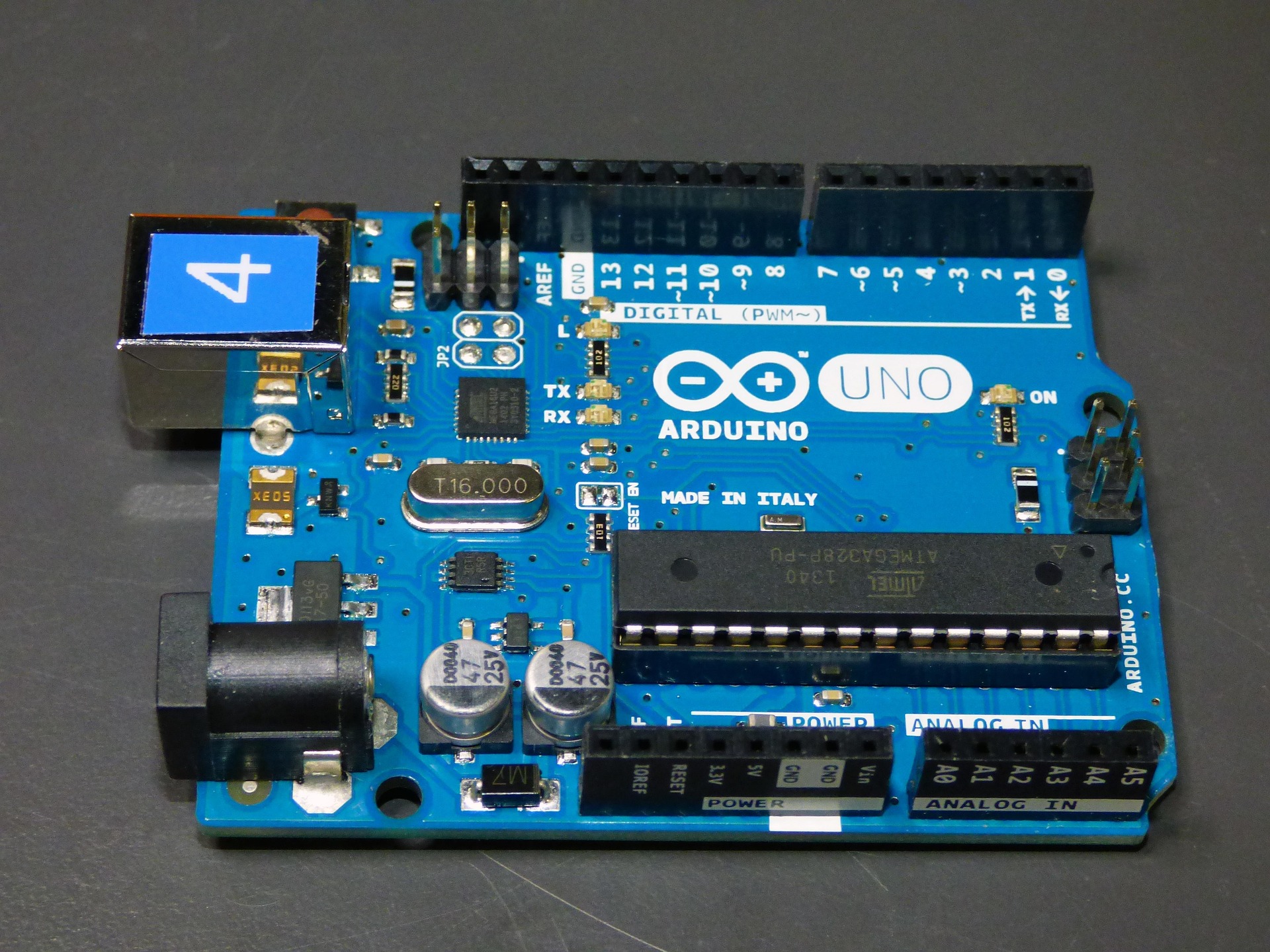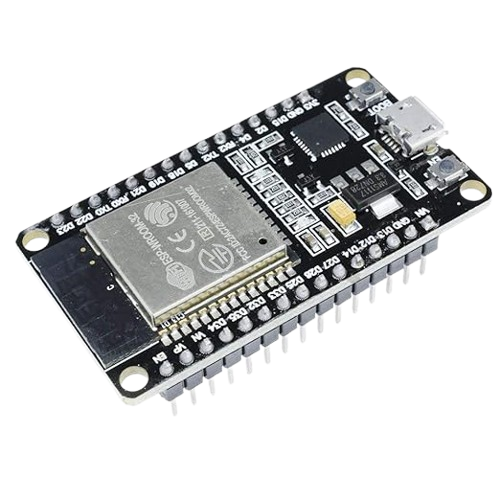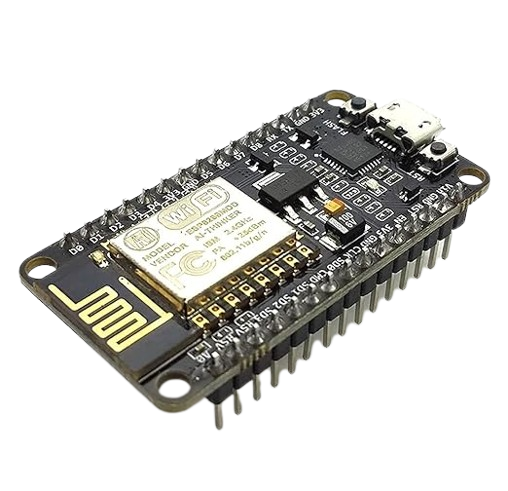STM32F411CEU6 Microcontroller: Features, Pinout, Architecture, and Applications

Overview
Introduction
The STM32F411CEU6 is a popular microcontroller from the STM32F4 series by STMicroelectronics. It is built around the powerful ARM Cortex-M4 32-bit core and is designed for applications where high performance and efficiency are required. This chip is widely used in embedded systems, industrial automation, robotics, consumer devices, and many other fields.
One of the key strengths of the STM32F411CEU6 is that it combines speed, low power usage, and rich peripheral support in a compact 48-pin package. Developers often choose this MCU when they need advanced processing features like a Floating Point Unit (FPU), large memory, and flexible communication interfaces in a small form factor.
Core Specifications at a Glance
Here are the main specifications of the STM32F411CEU6:-
Core: ARM Cortex-M4 with FPU
-
Maximum Frequency: 100 MHz
-
Flash Memory: 512 KB
-
SRAM: 128 KB
-
Operating Voltage: 1.7 V to 3.6 V
-
Package: LQFP-48 (48 pins)
-
Temperature Range: -40 °C to +85 °C
-
Timers: Multiple general-purpose and advanced timers
-
Communication: I2C, SPI/I2S, USART/UART, USB 2.0 OTG FS
-
ADC: 12-bit with up to 16 channels
-
GPIO Pins: Up to 37
-
Debugging Options: SWD (Serial Wire Debug) and JTAG
Architecture Overview
At the heart of this microcontroller lies the ARM Cortex-M4 core, which is known for balancing performance with energy efficiency. Some highlights of its architecture include:
-
Floating Point Unit (FPU): Enables faster mathematical operations, especially useful in digital signal processing and control systems.
-
Nested Vectored Interrupt Controller (NVIC): Provides efficient interrupt handling for real-time tasks.
-
Memory Protection Unit (MPU): Enhances system stability and safety by isolating memory regions.
-
Low-Power Modes: Sleep, Stop, and Standby states allow devices to save power when not fully active.
Pinout and GPIO Details
The STM32F411CEU6 comes in a 48-pin LQFP package, with around 37 pins available as General Purpose Input/Output (GPIO). These pins are multiplexed, meaning they can serve different roles based on the configuration.
-
Power Pins: VDD, VSS, VBAT
-
Reset Pin: NRST for hardware reset
-
Clock Pins: OSC_IN and OSC_OUT for external crystal oscillators
-
Communication Pins:
- USART: PA9 (TX), PA10 (RX)
- I2C: PB6 (SCL), PB7 (SDA)
- SPI: PA5 (SCK), PA6 (MISO), PA7 (MOSI)
-
Analog Pins: 12-bit ADC channels for sensor interfacing
Memory and Performance
The STM32F411CEU6 provides 512 KB of Flash memory for storing code and 128 KB of SRAM for runtime data. This is more than enough for medium to large projects, including real-time control systems and data logging applications.
Additionally, the DMA (Direct Memory Access) controller helps transfer data between memory and peripherals without involving the CPU. This frees up processing power for critical tasks.
The chip can run at a clock speed of up to 100 MHz, which is impressive for many embedded applications that require both speed and reliability.
Peripherals and Interfaces
This microcontroller supports a wide set of built-in peripherals, making it adaptable to various projects:-
Communication Interfaces
-
I2C: Connects to sensors and modules
-
SPI/I2S: For fast communication with memory chips or audio devices
-
USART/UART: For serial communication with PCs, modules, or other microcontrollers
-
USB 2.0 OTG FS: Allows USB device or host functionality
-
-
Timers
- Advanced control timers for PWM (Pulse Width Modulation), useful in motor control
- General-purpose timers for counting and timing applications
- Watchdog timers to reset the system in case of software failures
-
Analog Features
- 12-bit ADC with up to 16 input channels, suitable for reading sensor values like temperature, pressure, or light intensity
-
Other Features
- CRC calculation unit for data integrity checks
- Random Number Generator (RNG) for security or simulation purposes
Applications of STM32F411CEU6
Due to its flexibility and reliability, the STM32F411CEU6 is used in a wide variety of applications, including:-
Consumer Electronics: Smart devices, audio players, and wearables
-
Industrial Automation: Controllers, monitoring equipment, and data acquisition systems
-
Robotics: Motor drivers, motion controllers, and sensor fusion units
-
Automotive Systems: Electronic control modules, dashboards, and safety sensors
-
Research and Education: Ideal for embedded systems learning and prototyping
Related Variants in the STM32F4 Series
The STM32F411CEU6 is part of the STM32F4 family, which includes multiple microcontrollers with different feature sets:
-
STM32F401: Cost-effective version with smaller memory
-
STM32F407: Offers more communication options and higher performance
-
STM32F429: Includes LCD-TFT controller for graphics-based projects
-
STM32F446: Enhanced connectivity and faster processing compared to STM32F411
Example: LED Blinking with STM32F411CEU6
A common beginner project is blinking an LED using GPIO. Below is a simple example in C using STM32CubeIDE. The code toggles an LED connected to pin PA5 every half a second.
This small program demonstrates the basic steps of working with the STM32F411CEU6: enabling a peripheral clock, configuring a GPIO pin, and controlling the output state.
Why Choose STM32F411CEU6?
There are several reasons why engineers and students prefer this MCU:
- High processing power with ARM Cortex-M4 core
- Adequate Flash and SRAM for medium to large projects
- Rich set of communication interfaces
- Compact 48-pin package suitable for small PCBs
- Strong ecosystem support with STM32CubeIDE, HAL libraries, and third-party tools
It provides a perfect balance of performance, flexibility, and cost, making it a reliable choice for both learning and professional development.
Conclusion
The STM32F411CEU6 microcontroller is a powerful and versatile chip that fits perfectly into many embedded applications. With its 100 MHz ARM Cortex-M4 core, 512 KB Flash memory, 128 KB SRAM, and a wide range of peripherals, it delivers excellent performance in a compact package.
Whether you are building a consumer device, an industrial controller, or simply learning microcontroller programming, the STM32F411CEU6 is a solid option that combines efficiency, flexibility, and long-term support from STMicroelectronics.
Where to Buy
Prices may vary. Click on "Buy Now" to check current availability and pricing.
Administrator
Frequently Asked Questions
Common questions about STM32F411CEU6 Microcontroller: Features, Pinout, Architecture, and Applications. Find answers to the most frequently asked questions.
User Reviews & Comments
Share your experience with this IoT Blog. Your feedback helps our community make informed decisions!
Share Your Experience
Help others by sharing your thoughts about this IoT Blog.
Related Blogs
Explore more IoT Blogs in the same category

Arduino Uno: A Complete Guide for Beginners and IoT Enthusiasts (2025 Edition)
Microcontroller
Arduino Uno is a beginner-friendly microcontroller board based on ATmega328P, ideal for IoT and electronics projects. This guide covers its features, specifications, and practical applications to help you build smart systems easily and efficiently.

What is ESP32 in IoT?
Microcontroller
Discover the complete guide to ESP32 with detailed pinout, specifications, and project ideas. Learn how to use ESP32 for embedded systems, automation, smart devices, and real-time applications. Ideal for developers, engineers, and students looking for fast and efficient IoT development. Unlock the power of ESP32 in your next smart project.

What is ESP8266? Architecture, Pinout, Programming aur Applications
Microcontroller
This guide covers proven strategies to create technical content that drives traffic, increases visibility. Whether you're a beginner or a seasoned blogger, learn how to write about ESP8266, keyword placement, and reader engagement — without compromising content quality.
No Reviews Yet
Be the first to share your experience with this IoT Blog!